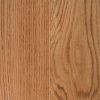I hear the term quarter sawn a lot on these forums. What exactly does that mean and how is it better or worse than other kinds of "sawns"?
You are using an out of date browser. It may not display this or other websites correctly.
You should upgrade or use an alternative browser.
You should upgrade or use an alternative browser.
Quarter Sawn vs. Other kinds of "sawn" wood?
- Thread starter AlexSwansboro
- Start date
- Status
- Not open for further replies.
By cutting the wood perpendicular to the bark you take advantage of the difference in shrinkage along various directions, making quarter sawn wood the most stable. Or less likely to warp, bow, split and twist as it shrinks during drying.
I hear the term quarter sawn a lot on these forums. What exactly does that mean and how is it better or worse than other kinds of "sawns"?
Check this page out, it explains various "sawing methods" and the lumber produced from such... Mainly you want to look at pages 11 ~ 13
Jeff,
That's a nifty website depiction with lots of other good information as well. Kudos to you and the boys for such a nice job! :thumbs_up
Alex,
Here's a few links that explain the characteristic whys and hows of wood movement and how that movement is affected by the 3 typical saw cuts.
https://www.wwgoa.com/articles/one-great-tip/three-reasons-to-use-quarter-sawn-wood/
http://wunderwoods.wordpress.com/?s=0-1-2+rule
http://wunderwoods.wordpress.com/20...lumber-is-so-stable-the-0-1-2-rule-in-action/
That's a nifty website depiction with lots of other good information as well. Kudos to you and the boys for such a nice job! :thumbs_up
Alex,
Here's a few links that explain the characteristic whys and hows of wood movement and how that movement is affected by the 3 typical saw cuts.
https://www.wwgoa.com/articles/one-great-tip/three-reasons-to-use-quarter-sawn-wood/
http://wunderwoods.wordpress.com/?s=0-1-2+rule
http://wunderwoods.wordpress.com/20...lumber-is-so-stable-the-0-1-2-rule-in-action/
Check this page out, it explains various "sawing methods" and the lumber produced from such... Mainly you want to look at pages 11 ~ 13
One of the best websites I have seen Jeff, thanks for sharing the link. Sooooooo......you are now marketing your "axes" , very good. :wsmile:
Carl, the definition of rift sawn on your drawing is incorrect according to current industry practices. Pictured below is a correct diagram obtained from the current edition of "Architectural Woodwork Standards":
All: There are several different industry recognized organizations that provide information about quarter and rift sawn lumber. These include the USDA Forestry Products Lab (FPL), the National Hardwood Lumber Association (NHLA), the National Hardwood Flooring Manufacturers Association (NHFMA), and the Architectural Woodworking Institute (AWI).
All of these organizations agree that quartersawn lumber is determined by the angle that the annular growth rings intersect the face of the board. Unfortunately, they don't all agree on exactly what that angle is. Some define it as between 60 - 90 degrees, others define it as between 75 - 90 degrees, and still others define it as 45 - 90 degrees.
In Bruce Hoadley's book "Understanding Wood", he defines quartersawn lumber as that where the growth rings form angles of anywhere from 45 degrees to 90 degrees with the surface, with "rift grain" indicating surfaces intermediate between 45 degrees to 90 degrees. Hoadley also refers to rift sawn lumber as "bastard grain" too. Unfortunately, Hoadley does not provide references to any FLP, NHLA or AWI standards in his book.
The current industry recognized definition of quarter and rift sawn lumber recognized by architects and professional cabinet shops nationwide is published by the AWI. AWI defines quartersawn lumber as having annual growth ring orientation between 60 - 90 degrees relative to the face of the board. AWI defines rift sawn lumber as measured by annular growth ring orientation between 30 - 60 degrees to the face of the board, with 45 degrees being "optimum" (page 449, Appendix B, section 3 Lumber of the 2009 1st edition of Architectural Woodwork Standards with drawing from same posted above).
The best that I have been able to determine is that earliest version of the drawing Carl shared of rift sawn lumber dates back to a mistake that was made by a manuscript editor of a FPL publication back in the 1930's. FPL corrected the mistake in subsequent versions of the document, but numerous copies of the document had already been released and the misinformation exists to this day.
Pretty much the entire woodworking manufacturers industry adheres to the AWI standard regarding rift and quarter sawn lumber.
Plain sawn lumber is also called "flat sawn".
Alex, in addition to the benefits of quartersawn lumber that Mike and others shared, in many species hidden beauty lies hidden within the wood that is only revealed by quartersawing. This is because the medullary cells in many hardwoods provide a ribbon of color and grain across the face of the board when they are sliced parallel to their growth. It is most visible in oak and sycamore, but also notable in other species including maple and cherry.
Last edited:
Check this page out, it explains various "sawing methods" and the lumber produced from such... Mainly you want to look at pages 11 ~ 13
Page 13 says quarter sawing produces less waste. I don't see the reason for that. Any insight?
- Status
- Not open for further replies.
LATEST FOR SALE LISTINGS
-
SOLD -- $75: Gast moa v113 Vacuum Pump Veneer, 60" bag and board
- Started by peterdnight
- Replies: 1
-
GONE: Gladiator 5 cleats, 10 hangers, Paper Towel and Shelf
- Started by peterdnight
- Replies: 3
-
SOLD -- $100 Makita mac700 portable air + grex pin nailer + 2 others + 50' hose
- Started by peterdnight
- Replies: 1
-
-


